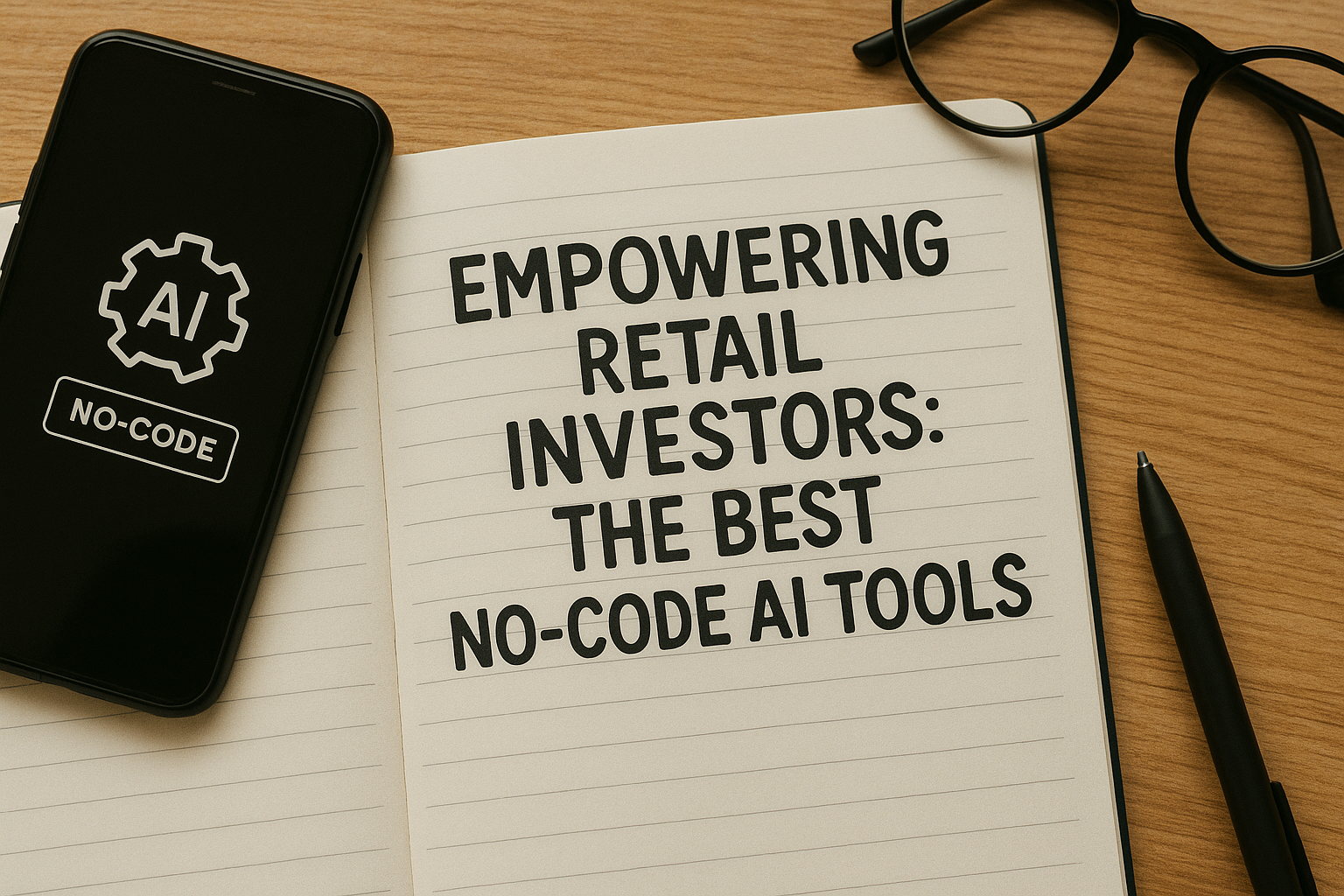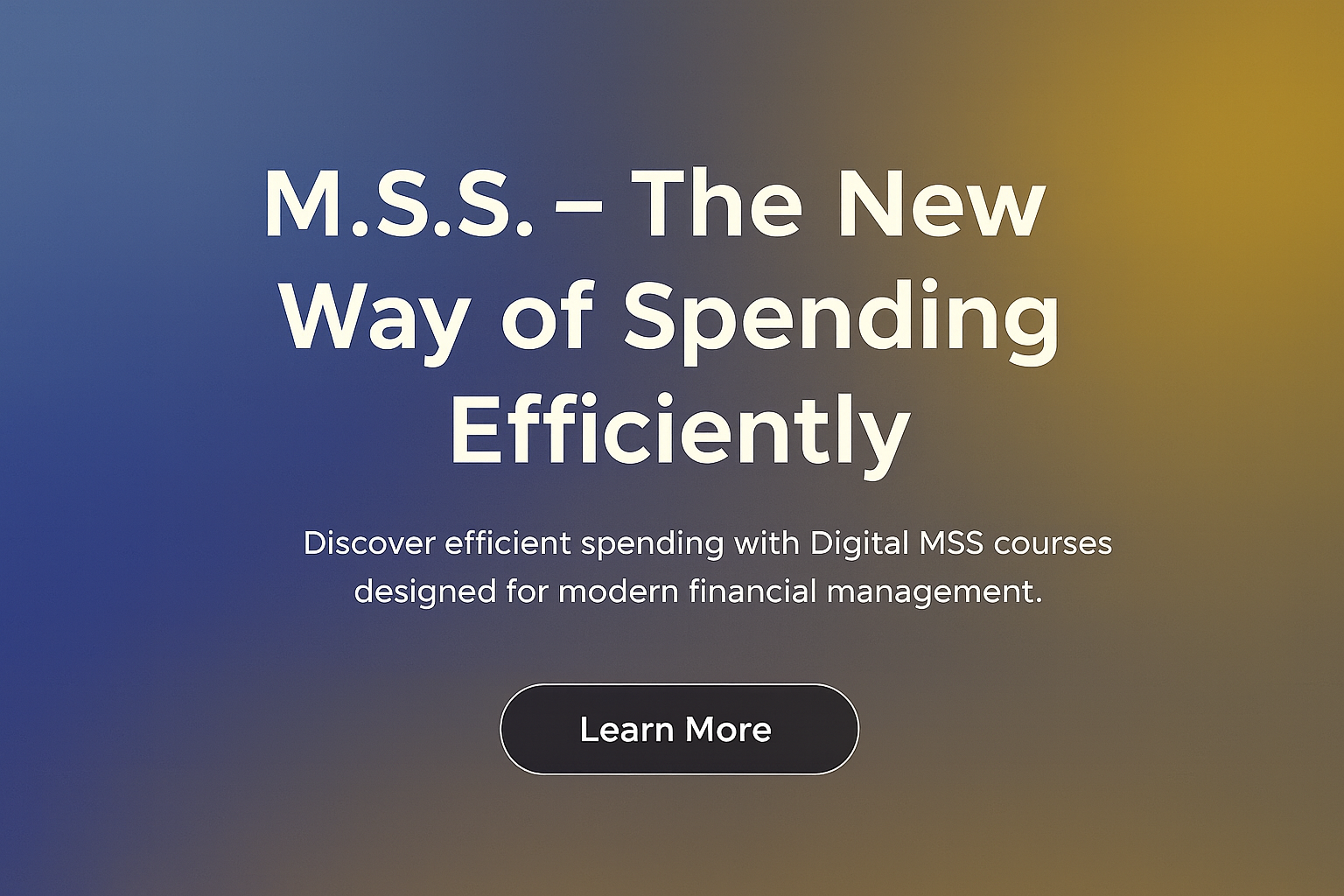Introduction: The Rise of AI in Retail Investing
The financial landscape is constantly evolving, and technological advancements have played a significant role in reshaping how individuals manage their investments. Artificial intelligence (AI) is no longer a futuristic concept but a present-day reality that is rapidly transforming various sectors, including the world of finance. Retail investors, who were once at a disadvantage compared to institutional investors with their vast resources, are now gaining access to sophisticated tools and insights, thanks to the emergence of no-code AI platforms. This essay explores the best no-code AI tools that are empowering retail investors, enabling them to make more informed decisions, optimize their portfolios, and navigate the complexities of the market with greater confidence.
Understanding No-Code AI
Before diving into specific tools, it’s crucial to understand what “no-code AI” entails. Traditionally, developing and implementing AI solutions required extensive programming knowledge and expertise in machine learning. However, no-code AI platforms have democratized this process by providing user-friendly interfaces and pre-built components that allow individuals without coding skills to leverage the power of AI. These platforms typically offer visual drag-and-drop interfaces, pre-trained models, and automated workflows, simplifying the development and deployment of AI-powered applications.
For retail investors, this means they can harness AI for various tasks, such as analyzing market trends, predicting stock prices, managing risk, and automating trading strategies, without having to write a single line of code. This accessibility is leveling the playing field and empowering individuals to take control of their financial futures.
The Benefits of No-Code AI for Retail Investors
The integration of no-code AI tools into retail investing offers a plethora of benefits:
- Accessibility: No-code platforms eliminate the barrier of entry for individuals without programming skills, allowing a broader audience to utilize AI in their investment strategies.
- Speed and Efficiency: Automating tasks such as data analysis and portfolio optimization with AI significantly reduces the time and effort required, enabling investors to make quicker and more informed decisions.
- Data-Driven Insights: AI algorithms can process vast amounts of data, including financial news, social media sentiment, and historical market data, to identify patterns and correlations that may be difficult for humans to spot. This can lead to more accurate predictions and better investment outcomes.
- Personalization: AI can tailor investment strategies and recommendations to individual investors based on their risk tolerance, financial goals, and investment preferences.
- Risk Management: AI can help identify and assess potential risks in investment portfolios, allowing investors to take proactive measures to mitigate those risks.
- Cost-Effectiveness: Compared to hiring data scientists or investing in complex software development, no-code AI tools offer a more affordable solution for retail investors.
Top No-Code AI Tools for Retail Investors
Several no-code AI platforms cater to the needs of retail investors. Here are some of the most prominent and effective tools:
1. Akkio
Akkio is a no-code AI platform that enables users to build and deploy predictive models for various applications, including financial forecasting. Retail investors can use Akkio to:
- Predict stock prices:** By analyzing historical market data, financial news, and other relevant factors, Akkio can generate predictions about future stock prices.
- Assess investment risk:** Akkio can help identify potential risks associated with different investments and provide insights into portfolio diversification strategies.
- Forecast financial metrics:** Investors can use Akkio to predict key financial metrics, such as earnings, revenue, and cash flow, for individual companies or entire industries.
Akkio’s user-friendly interface and pre-built machine learning models make it easy for retail investors to get started with AI-powered investing.
2. Obviously AI
Obviously AI is another no-code platform that simplifies the process of data analysis and prediction. It allows users to connect to various data sources, including spreadsheets and databases, and build AI models with just a few clicks. Retail investors can leverage Obviously AI to:
- Analyze market trends:** Identify patterns and trends in market data to make informed investment decisions.
- Predict asset prices:** Forecast the future prices of stocks, bonds, and other assets.
- Evaluate investment opportunities:** Assess the potential returns and risks of different investment options.
Obviously AI’s intuitive interface and automated machine learning capabilities make it accessible to investors with limited technical expertise.
3. Google Cloud Vertex AI
While Google Cloud’s Vertex AI is a powerful platform for machine learning, it also offers no-code or low-code tools that can be utilized by retail investors, particularly those who want more customization. Vertex AI provides:
- Pre-trained models:** Investors can use pre-trained models for common tasks like sentiment analysis of financial news or basic forecasting.
- AutoML:** This feature automates the process of training and deploying machine learning models, reducing the need for deep technical knowledge.
- Scalability:** Google Cloud’s infrastructure allows investors to analyze large datasets and build complex models that can scale with their needs.
For retail investors with some technical inclination or those wanting to grow, Vertex AI offers a balance of no-code simplicity and the power of a comprehensive AI platform.
4. Amazon SageMaker Canvas
Amazon SageMaker Canvas is a visual, no-code interface that enables business analysts and others without coding experience to build machine learning models and generate accurate predictions. For retail investors, this means:
- Easy access to machine learning:** Build models to predict stock prices, analyze market sentiment, and forecast financial performance using a simple point-and-click interface.
- Data integration:** Connect to various data sources, including spreadsheets, databases, and data warehouses, to bring in the information needed for analysis.
- Faster decision-making:** Get quick insights and predictions to make timely investment decisions.
SageMaker Canvas simplifies the process, allowing retail investors to focus on leveraging AI for their investment strategies without getting bogged down in the complexities of coding.
5. BuildFire AI
While primarily known for mobile app development, BuildFire AI can be adapted for creating investment-related tools. Its AI-powered app-building capabilities can help retail investors in the following ways:
- Customized investment dashboards:** Create personalized apps to track portfolios, monitor market data, and receive AI-driven insights.
- Automated alerts:** Set up AI-powered alerts for significant market changes, price movements, or relevant news events.
- Integration of data sources:** Connect various APIs and data feeds to provide a comprehensive view of the investment landscape within a single app.
BuildFire AI’s strength lies in its ability to rapidly create custom applications, which can be tailored to the specific needs of retail investors.
Examples of No-Code AI in Action for Retail Investors
Here are a few practical examples of how retail investors can use no-code AI tools:
- Portfolio Optimization: An investor can use a no-code AI platform to analyze their current portfolio and identify opportunities to improve its performance. The AI can consider factors such as risk tolerance, asset allocation, and market conditions to suggest adjustments that could lead to higher returns or lower risk.
- Stock Screening: A retail investor can create a custom stock screener using a no-code AI tool. They can define their investment criteria, such as price-to-earnings ratio, dividend yield, and growth potential, and the AI will identify stocks that meet those criteria.
- Sentiment Analysis: An investor can use a no-code AI platform to analyze social media sentiment and news articles related to a specific company or industry. This can provide valuable insights into market sentiment and potential price movements.
- Automated Trading: A more advanced investor might use a no-code AI tool to develop and implement an automated trading strategy. The AI can be programmed to execute trades based on predefined rules and market conditions, freeing up the investor’s time and potentially improving trading efficiency.
Expanding on Key No-Code AI Tools
To give a more comprehensive view, let’s delve deeper into some of the tools mentioned:
Akkio: A Closer Look
Akkio stands out for its focus on ease of use and speed in deploying AI models. For a retail investor, this translates to:
- Rapid experimentation: Quickly test different investment hypotheses by building various predictive models without long development cycles.
- Accessibility to complex techniques: Even without a deep understanding of machine learning, investors can utilize sophisticated techniques like regression, classification, and time-series analysis through Akkio’s intuitive interface.
- Integration with existing workflows: Akkio can be integrated with spreadsheets or other data sources that retail investors commonly use, streamlining the analysis process.
Obviously AI: Simplifying Data Insights
Obviously AI excels in making data analysis accessible. This is particularly beneficial for retail investors who want to:
- Understand market dynamics: Gain a clearer picture of how different market factors interact and influence asset prices.
- Identify potential anomalies: Detect unusual patterns or outliers in financial data that may signal investment opportunities or risks.
- Communicate findings effectively: Generate easy-to-understand reports and visualizations to share insights with others or to document their investment rationale.
Google Cloud Vertex AI: Scalability and Customization
For retail investors with growing portfolios or more complex analytical needs, Google Cloud Vertex AI provides:
- Scalable infrastructure: Handle large volumes of financial data and perform computationally intensive analysis without performance bottlenecks.
- Customizable solutions: While offering no-code tools, Vertex AI also allows for more advanced customization for investors who want to fine-tune their models or incorporate specific data sources.
- Access to cutting-edge AI: Leverage Google’s latest advancements in AI, including powerful pre-trained models and state-of-the-art machine learning techniques.
The Role of Data in No-Code AI for Investing
The effectiveness of any AI tool, especially in the context of investing, hinges on the quality and relevance of the data used. Retail investors should consider the following:
- Data sources: Utilize reputable sources of financial data, such as established financial data providers, government agencies, and reputable news outlets.
- Data cleaning: Ensure that the data is clean, accurate, and free from errors or biases that could skew the results of the AI models.
- Feature engineering: Select the most relevant data features (e.g., price-to-earnings ratio, trading volume, interest rates) that are likely to influence investment outcomes.
- Data diversity: Incorporate a variety of data sources to capture different aspects of the market and reduce the risk of overfitting to a specific dataset.
By paying close attention to data quality and management, retail investors can improve the accuracy and reliability of the AI-powered insights they generate.
The Future of No-Code AI in Retail Investing
The future of no-code AI in retail investing is bright, with ongoing advancements promising to further empower individual investors. Some key trends to watch include:
- Increased Accessibility: No-code AI platforms will become even more user-friendly, with more intuitive interfaces and pre-built solutions tailored specifically for retail investors.
- Enhanced Functionality: These platforms will offer more sophisticated features, such as advanced predictive modeling, personalized investment recommendations, and seamless integration with other financial tools.
- Democratization of Data: Access to high-quality financial data will become more widespread, enabling retail investors to train more accurate and reliable AI models.
- AI-Powered Personalization: AI will play an even greater role in tailoring investment strategies and experiences to individual investors, leading to more personalized and effective outcomes.
- Integration with other technologies: No-code AI will be increasingly integrated with other emerging technologies, such as blockchain and decentralized finance (DeFi), opening up new possibilities for retail investors.
Challenges and Considerations
While no-code AI offers numerous benefits, it’s essential to acknowledge potential challenges and considerations:
- Data Quality: The accuracy and reliability of AI models depend heavily on the quality of the data they are trained on. Retail investors need to ensure they are using reliable and unbiased data sources.
- Model Transparency: Some no-code AI platforms may lack transparency, making it difficult for investors to understand how the models arrive at their predictions. This can be a concern for those who want to understand the rationale behind their investment decisions.
- Overfitting: There is a risk that AI models may overfit the historical data, leading to inaccurate predictions in the future. Retail investors need to be aware of this risk and take steps to validate the performance of their models.
- Ethical Considerations: As AI becomes more prevalent in finance, ethical considerations, such as bias in algorithms and the potential for market manipulation, need to be carefully addressed.
- The “Black Box” Problem: Some AI algorithms, particularly deep learning models, can be complex and difficult to interpret. This “black box” nature can make it challenging to understand why a model makes a particular prediction, which can be a concern in the context of financial decision-making.
Conclusion
No-code AI tools are revolutionizing the world of retail investing, empowering individuals to make more informed decisions, manage their portfolios effectively, and participate in the financial markets with greater confidence. By eliminating the need for coding skills, these platforms are democratizing access to AI-powered insights, leveling the playing field between retail and institutional investors. As AI technology continues to evolve, the future of retail investing promises to be even more data-driven, personalized, and accessible. However, it is crucial for retail investors to use these tools responsibly, understand their limitations, and always exercise due diligence.
Disclaimer: This article is for informational purposes only and does not constitute financial advice. Please consult a qualified financial advisor before making any investment decisions.
Related External Links
To further your understanding of AI in finance and no-code development, here are some related external links:
- Securities and Exchange Commission (SEC) Investor Information: https://www.investor.gov/
- Financial Industry Regulatory Authority (FINRA): https://www.finra.org/
- Investopedia: https://www.investopedia.com/
- MIT Sloan School of Management – Artificial Intelligence in Business: https://mitsloan.mit.edu/ideas-made-to-matter/how-artificial-intelligence-is-used-in-business
- Towards Data Science: https://towardsdatascience.com/ (For more general information on data science and AI)








